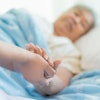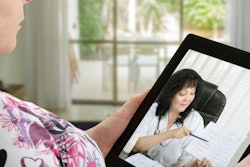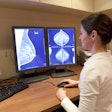Online self-scheduling could help increase adherence to diagnostic mammography, according to research published July 12 in the Journal of the American College of Radiology.
A team led by Emily Ambinder, MD, from Johns Hopkins Medicine in Baltimore, MD, found that over 17% of women used the self-scheduling service with increased utilization during the study period, 1.5 years after the institution implemented the option.
“Our results suggest that patients using the self-scheduling option benefited from appointment slots during evenings and weekends,” the Ambinder team wrote.
Previous reports suggest that more patients and healthcare providers are using online portals, with self-scheduling options aiming to increase patient satisfaction, appointment attendance, and accountability. Additionally, they seek to help with healthcare costs and efficiency.
Ambinder and colleagues described the first 1.5 years that their institution offered self-scheduling for diagnostic mammograms. They wanted to show the tool’s feasibility and find out which patient subpopulations were most likely to self-schedule.
The study included 23,150 diagnostic mammograms, with 82.8% scheduled by staff members (n = 19,163) and 17.2% self-scheduled by patients via the online portal (n = 3,987).
To use self-scheduling, a patient must already have an order for the exam placed by their provider. Ambinder et al wrote that their institution expedites diagnostic mammograms for an abnormal screening mammogram by calling all recalled patients to schedule a diagnostic appointment. Scheduling staff can decide to overbook an appointment slot to accommodate a patient with an urgent problem, though it is not available to patients who self-schedule.
Of the patients who self-scheduled using the online portal, 34.7% (n = 1,383) made their appointment outside of regular business hours (Monday to Friday, 8 a.m. to 5 p.m.). However, scheduling staff could not opt for evening and weekend appointments by phone. The researchers reported 33 no-shows or canceled diagnostic appointments during the study period. Of these, one was self-scheduled and 32 were staff-scheduled (p = 0.03).
Also, women younger than 50 were 3.7 times more likely to use online self-scheduling than women older than 70. The study authors suggested this may reflect trends in using digital patient tools and resources, which favor younger patients.
The study also found that Asian/Pacific Islander and non-Hispanic white women were most likely to self-schedule, at 22% and 18%, respectively. Non-Hispanic Black women meanwhile were the least likely to self-schedule at 16%.
Finally, women who self-scheduled had a significantly longer time between the scheduling date and the exam date than women who were scheduled by staff (46 days vs. 28 days, p < 0.001).
The study authors said this finding may be because patients use self-scheduling for convenience.
“These same patients may have more limited availability and therefore choose later exam dates that best work with their schedules,” they wrote. “In addition, our staff can often see cancellations or double book appointments to expedite appointments for patients who staff-schedule.”
The authors added that the results suggest the “need to continue offering staff-scheduled appointments in order to best serve those requiring a more rapid diagnostic evaluation.”
The full study can be found here.


















